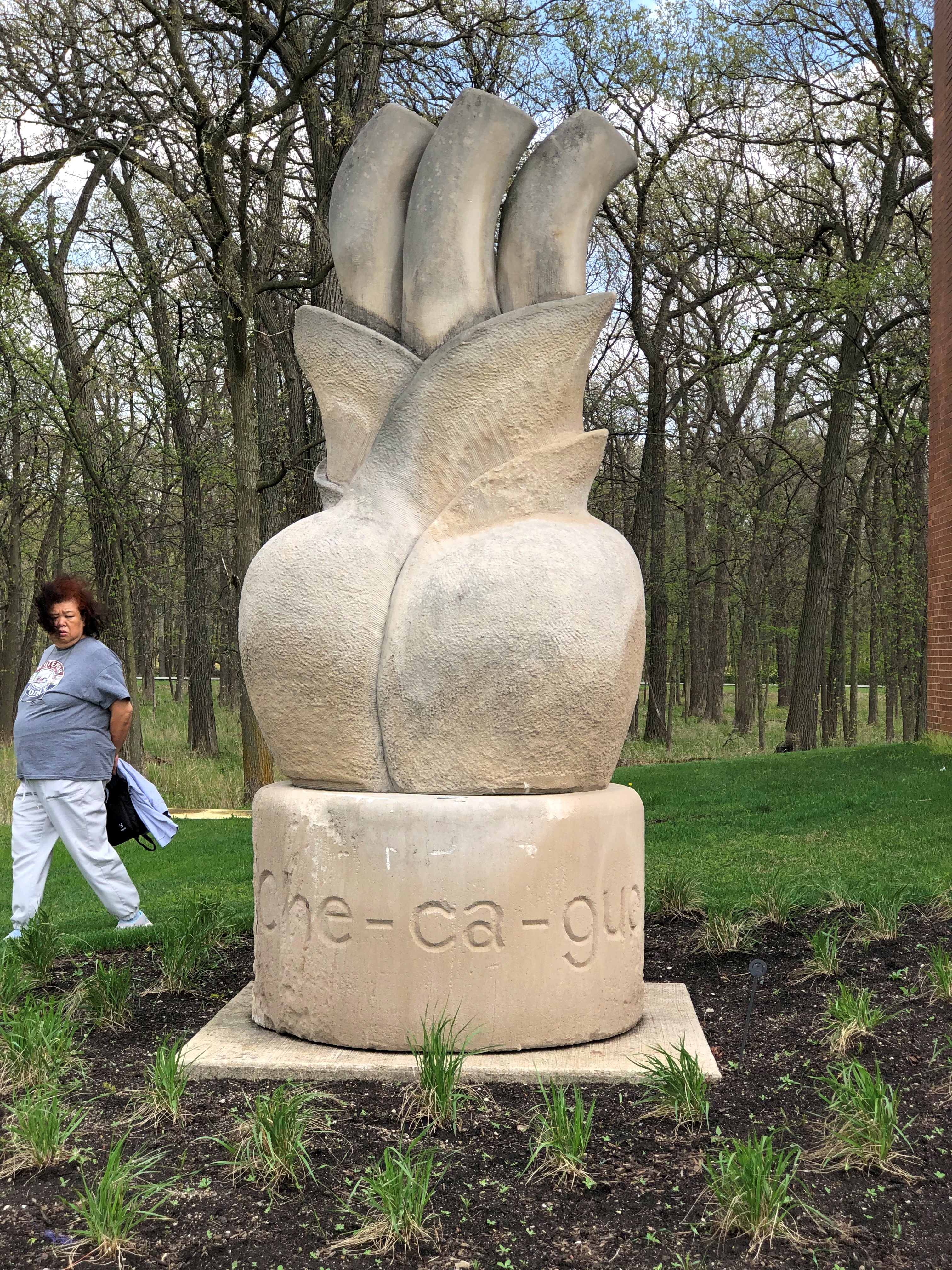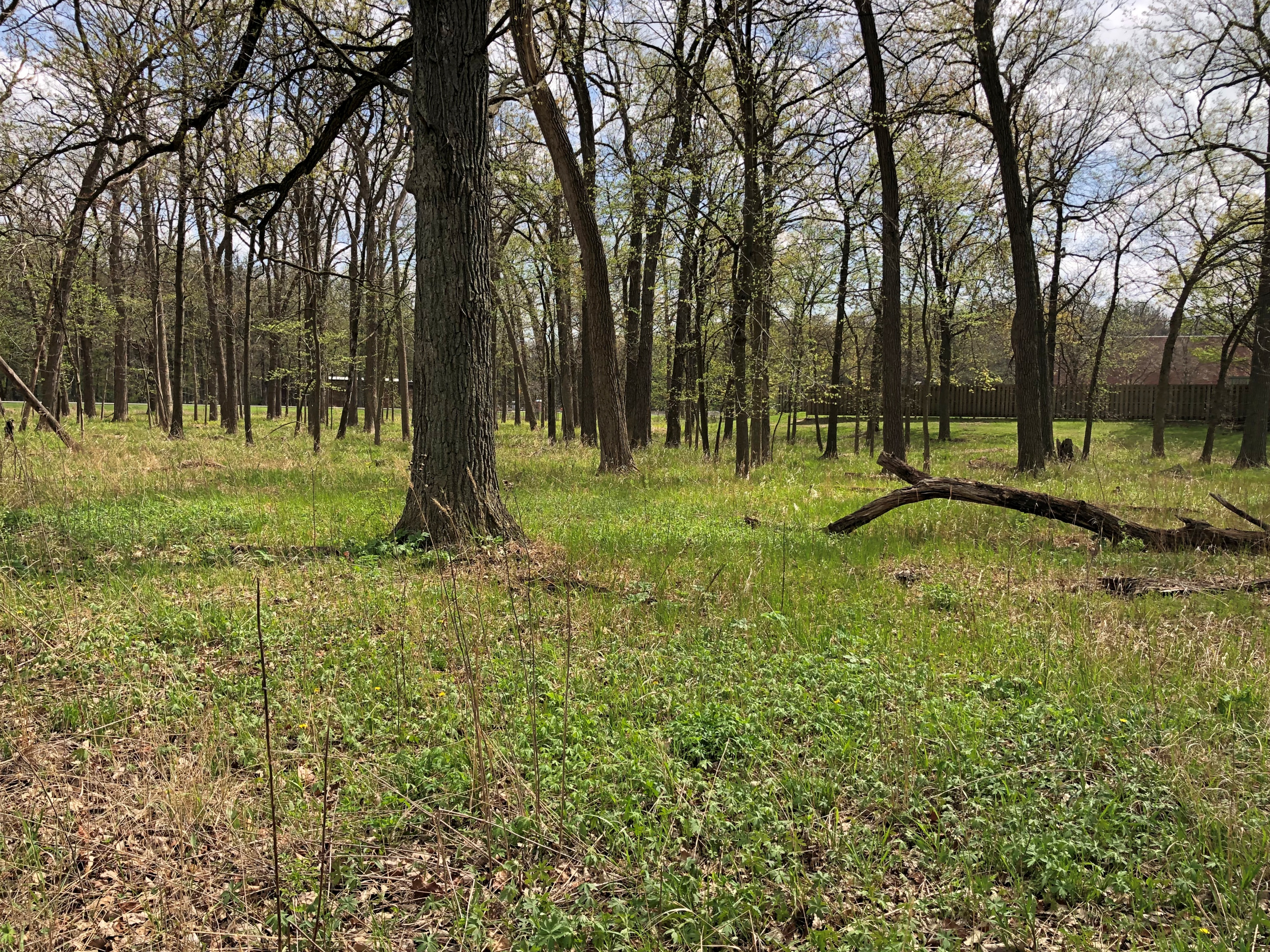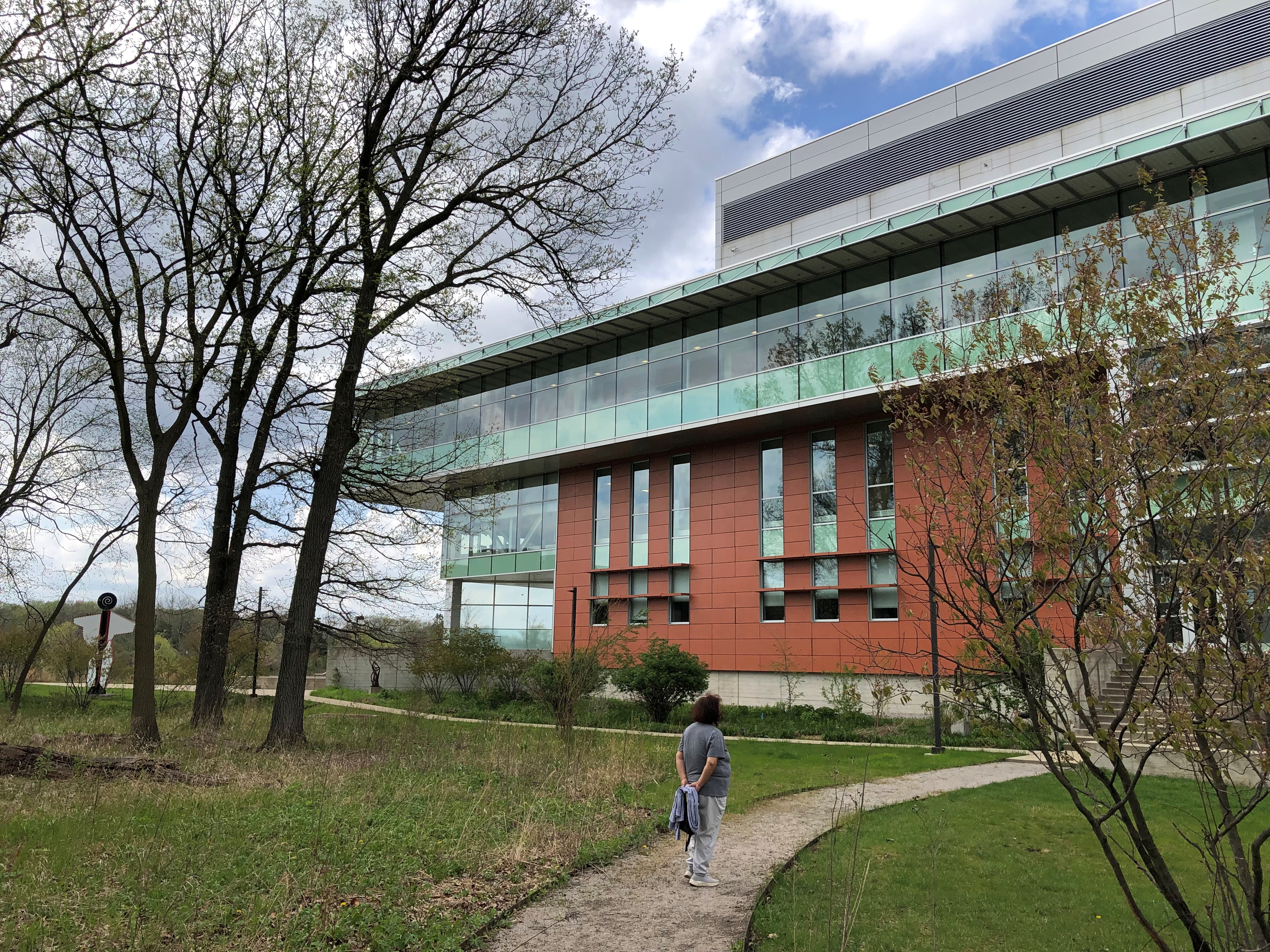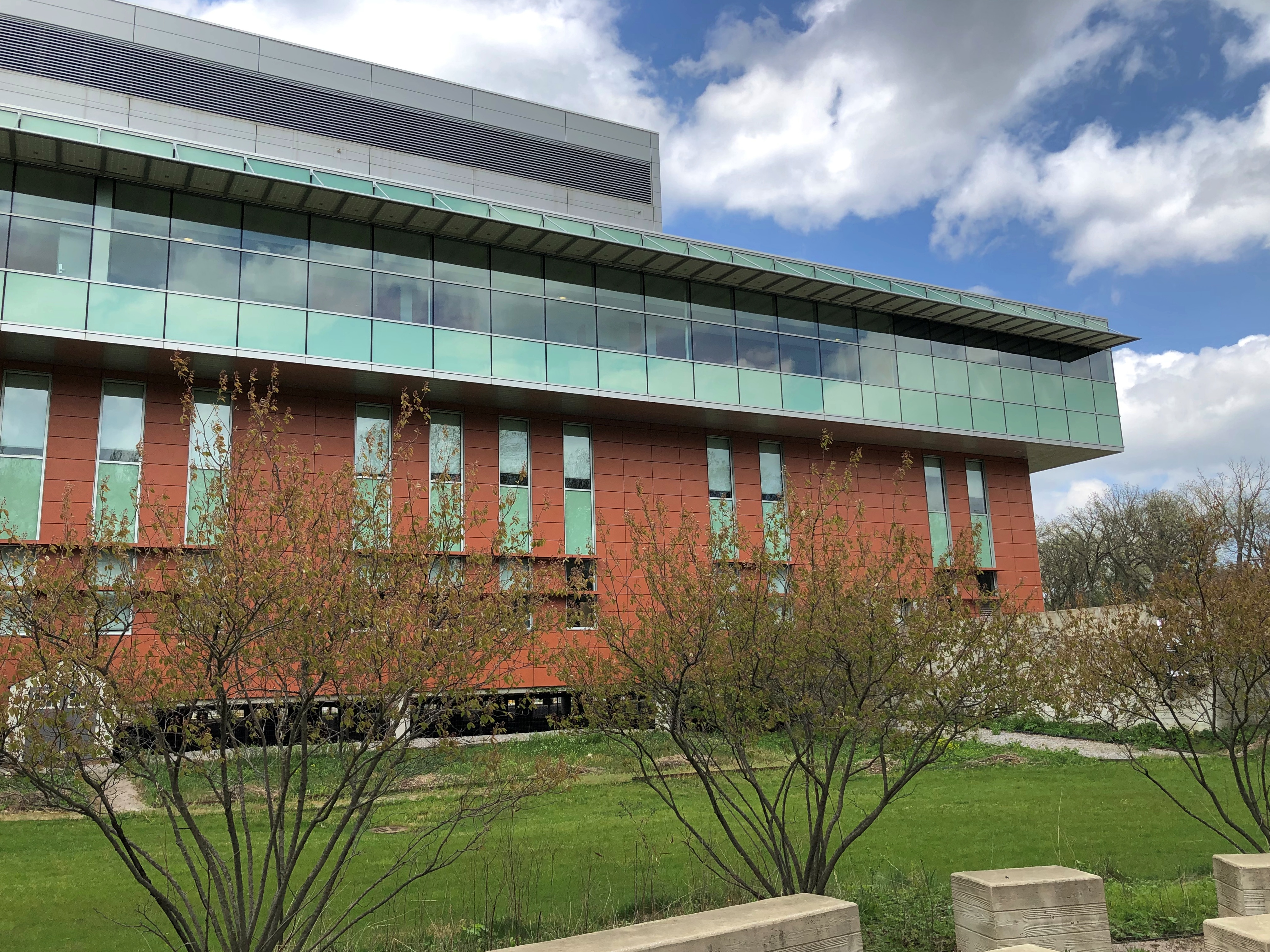We’re in that rarefied period when neither the heater nor the cooler kicks in much. You could say God is my HVAC. It won’t last.
How many community college campuses have enough outdoor sculpture to qualify as a sculpture garden? Say, a dozen pieces or more. It’s an odd question, but it occurred to me at Oakton College in Des Plaines as we walked around recently, taking in the fine spring day and an assortment of outdoor sculptures on that campus.
That online search didn’t take long. If you wanted to figure out which community colleges have sculpture gardens, looks like the International Directory of Sculpture Parks & Gardens would be your go-to source. For all its insanity, the Internet continues to amaze.
Copses of trees and bushes ring the college’s wide parking lots, giving its small cluster of buildings a semi-suburban feel. A small creek runs through campus, and signs next to a small bridge over it say Turtle Xing, with turtle silhouettes on the yellow traffic signs to remind us to watch out for shelled reptiles in easy-to-smash spots. Not sure I’d ever seen one of those kind of warnings before.
The sculpture isn’t off in some field. A representative is right there in your face at the edge of a parking lot.
A little more subtle, but just as close to the parking lot.
“Pink Hydrant 15” by musician and sculptor Irwin Hepplewhite.
Never mind, I made that up.
“Silver Oak” by Barry Tinsley (1983). A Chicago artist, still apparently active. Glad to hear it.
I had to puzzle that for a moment. Chi-ca-guo. 
Of course, Chicago, “wild onion,” a version of an Algonquin word for the weedy onion marshes where the Chicago River met Lake Michigan, pre-Fort Dearborn.
This was good to learn: a certified wildlife habitat.

I know there’s a nonprofit and good intentions behind that designation, but I can’t help but laugh a little. Where is this certificate posted, anyway? Can animals request a copy?
I know where it must be: in this building.


That’s a show-stopper: The Margaret Burke Lee Science and Health Careers Center, a 2010s addition to campus. Modernist glass blended with Prairie School (?) and I’m too dense to know what else, but there’s some exceptional design skill on display in the structure, which is perched next to the campus’ central pond. Maybe the other buildings, presentable enough but a little ordinary, envy Margaret for her green-tint good looks.
Design by Legat Architects, a regional practice. Nice work, Legat.
